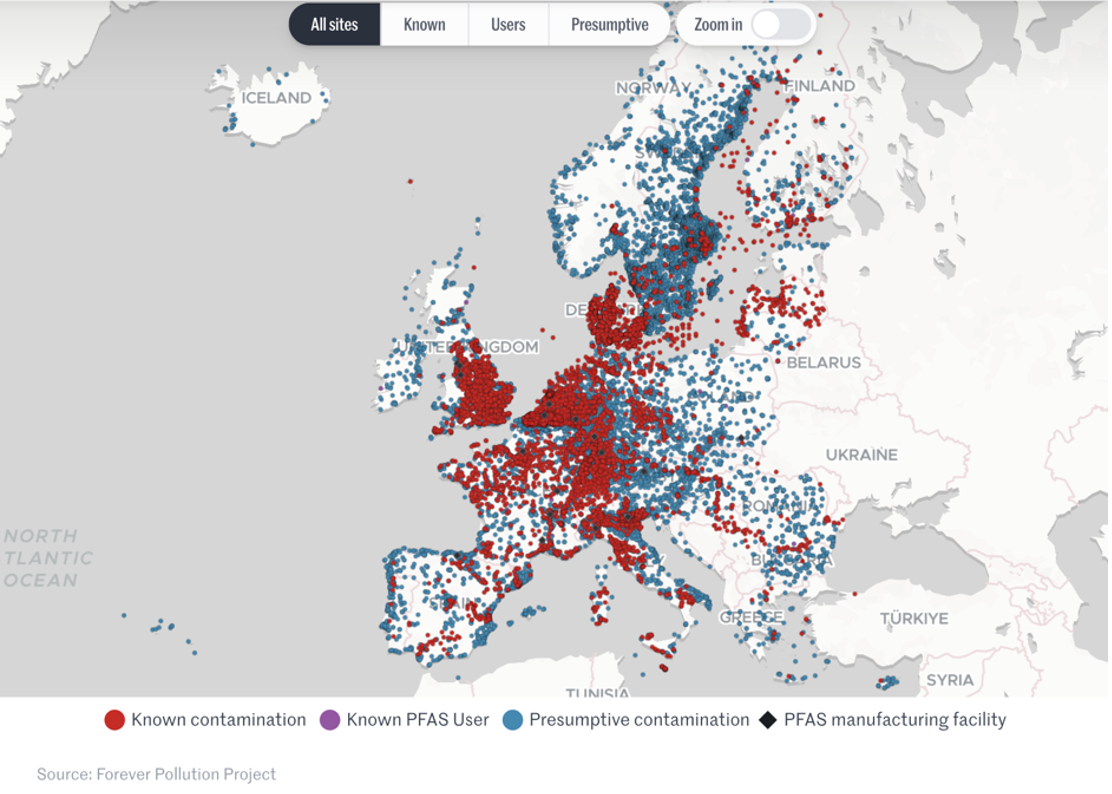Request a Demo
Trusted by leading brands, retailers, manufacturers and service providers across industries such as:
















Chemicals are present in the food we eat and the air we breathe, but not all are harmful. Synthetic chemicals have been used in commercial production for almost a century. But awareness is growing on the use of toxic man-made chemicals in the manufacture of products that affect the food we eat and the clothes we wear. Fortunately, legislation is in place to prevent the use of dangerous chemicals in the manufacture of products for human use and consumption in most of the developed world. But researchers do not know all the hazards of all the chemicals yet. More regulations are being enacted every year to protect us from further damage. Measures are being put in place to track and monitor chemical compliance using the latest technology. The hope is that we will be able to limit further damage to the environment and human health.
These harmful substances are known as forever chemicals because they break down so slowly – some may take 1000 years to degrade. Technically, they are referred to as PFAS, short for perfluoroalkyl and poly-fluoroalkyl substances.
PFAS are present in nonstick Teflon cookware, water-repellent clothing and other items, stain-resistant fabrics, and cosmetics. Teflon is used in a variety of industries such as automotive, aerospace, medical, and industrial for applications such as bearings, seals, and other components. The PFAS are used to resist grease, water and oil and are widely used in the manufacturing of take-out food boxes. Even if the item in which these chemicals found breaks down, PFAS are often left behind.
Many states have targeted the use of PFAS in multiple product categories, including heavy-duty garments, cookware, cosmetics, carpets, food packaging, draperies and upholstery. More than 70% of items sold as waterproof or stain-proof in the U.S. contain PFAS, according to a 2022 study by Toxic Free Future. One report by the Centers for Disease Control and Prevention’s National Health and Nutrition Examination Survey (NHANES) found some level of PFAS in the blood of 97% of the Americans it surveyed.
The Toxic Substances Control Act (TSCA) already requires manufacturers to report PFAS usage back to 2011, specifically regarding uses, volumes, disposal, hazards, and exposures. More recently, in September 2022, California passed a law to ban the manufacture, sale or distribution of textile articles, apparel, and outdoor apparel containing intentionally added PFAS by 2025. A similar California law goes into effect on July 1, 2023, that provides a prohibition on selling or distributing any new juvenile product that contains regulated PFAS chemicals. This law covers items such as pillows, bassinets, bedside sleepers, booster seats, changing pads, crib mattresses, floor playmats, highchairs, and many other functional items for children.
And most recently, the US Environment Protection Agency (EPA) on Tuesday 14th March’23 proposed the first national drinking water standard for ‘forever chemicals’ that are dangerous to human health. The proposal is to leverage the latest science and complementing state efforts to establish legally enforceable levels of six PFAS (PFOA, PFOS as individual contaminants and other 4 PFNA, PFHxS, PFBS, and GenX Chemicals – as a mixture) known to occur in drinking water.
The Forever Pollution Map was created by Le Monde and its 17 partners from a cross-border investigation, the Forever Pollution Project. It is the first map to show the extent of Europe’s contamination by PFAS. The map shows PFAS production facilities, some sites where PFAS are used, as well as sites where contamination has been detected and those that are likely to be contaminated. A total of over 17 000 sites have been detected.
The Map of Forever Pollution in Europe

There are thousands of PFAS but in the UK, only two – PFOS and PFOA – are regulated. The UK is falling behind Europe which is making great progress in expanding its controls. Limited data means that assessing the risk from PFAS in the UK is challenging.
The two most notorious and widely studied PFAS are PFOA (in Teflon) and PFOS (an ingredient in Scotchguard). Exposure to these chemicals can be through consuming contaminated water or food or using products made with PFAS. Very small doses of these PFAS have been linked to cancer, reproductive and immune system harm, and other diseases. Not only are PFAS a threat to human health, but pollution in rivers also poses a threat to wildlife too. The world is waking up to the wider problem of wastewater treatment but so far action in this area has been slow.
Patagonia, a leading global outdoor apparel brand, is committed to reducing its environmental impacts, including those associated with PFAS. The company has set a science-based goal to eliminate PFAS from its products and supply chain by 2025. Additionally, Patagonia is investing in research and development to identify and develop PFAS-free alternatives.
Gore-Tex has committed to eliminating all PFAS from its products and in its supply chain already. The company is transitioning to a PFC-free durable water repellent (DWR) coating Perfluorochemicals (PFCs) are a group of chemicals used to make fluoropolymer coatings and products that resist heat, oil, stains, grease, and water. Gore-Tex is ensuring that all its suppliers comply with the company’s no PFAS policy.
In the USA, the level of PFAS compliance and reporting varies by state and region. California, Michigan, New Jersey, and New York have enacted their own regulations for PFAS compliance and reporting. The Environmental Protection Agency (EPA) has issued a range of guidance documents and policies related to PFAS compliance and reporting. The EU has established a monitoring system to evaluate the effectiveness of PFAS controls and to identify sources of contamination. Member states are also developing their own regulations and reporting requirements to address PFAS contamination. Under the Biden-Harris Administration, EPA has restored scientific integrity and accelerated the pace of research and actions needed to tackle the PFAS crisis and protect American communities.
As regulations are constantly changing and evolving there is added complexity to the way manufacturers must report their status to the authorities. It has become vital to use technology solutions to capture, manage and report data about the forever PFAS chemicals in products. Some of the current reporting requirements relate to:
The tracking and monitoring requirements will continue to become more onerous as regulations tighten. It is becoming necessary to use the right tools or a software solution to aggregate and manage the volumes of data generated. Automating the collection and reporting process means fewer resources and a lower cost of compliance. All the required data can be made available on a single platform accessible to all authorized users.
Using TOPO’s Chemical Management, Compliance and Know Your Product modules, manufacturers and brands can adapt quickly to new regulations.
Here are 7 ways we can help:
Topo’s Chemical management module manages chemical inventories uploaded by the factories. Retailers and brands can collaborate with factories to track and share chemical audits, water test, chemical and physical lab test on materials and finished goods and set and track corrective and preventive actions instantly. With this module users can stop spending too much time on the manual work and resources but make the process more data-driven, identify risks and act faster.
Topo’s Know Your Product module is a product compliance solution that allows users to search for product documentation and requirements with ease. It is a user-friendly tool that gives access to all the regulatory requirements, compliance information, and certifications in a single search in seconds. It helps users narrow their searches down and focus on aspects such as product categories and sub-categories, materials, product functions, sale location and type of output, which may include information such as chemical limits, advice in the form of guidebooks and links to regulatory sites. This module is currently in beta-stage and open for testing.
Does this sound like something we could help you with? If so then get started today by contacting us at hello@topo.cc